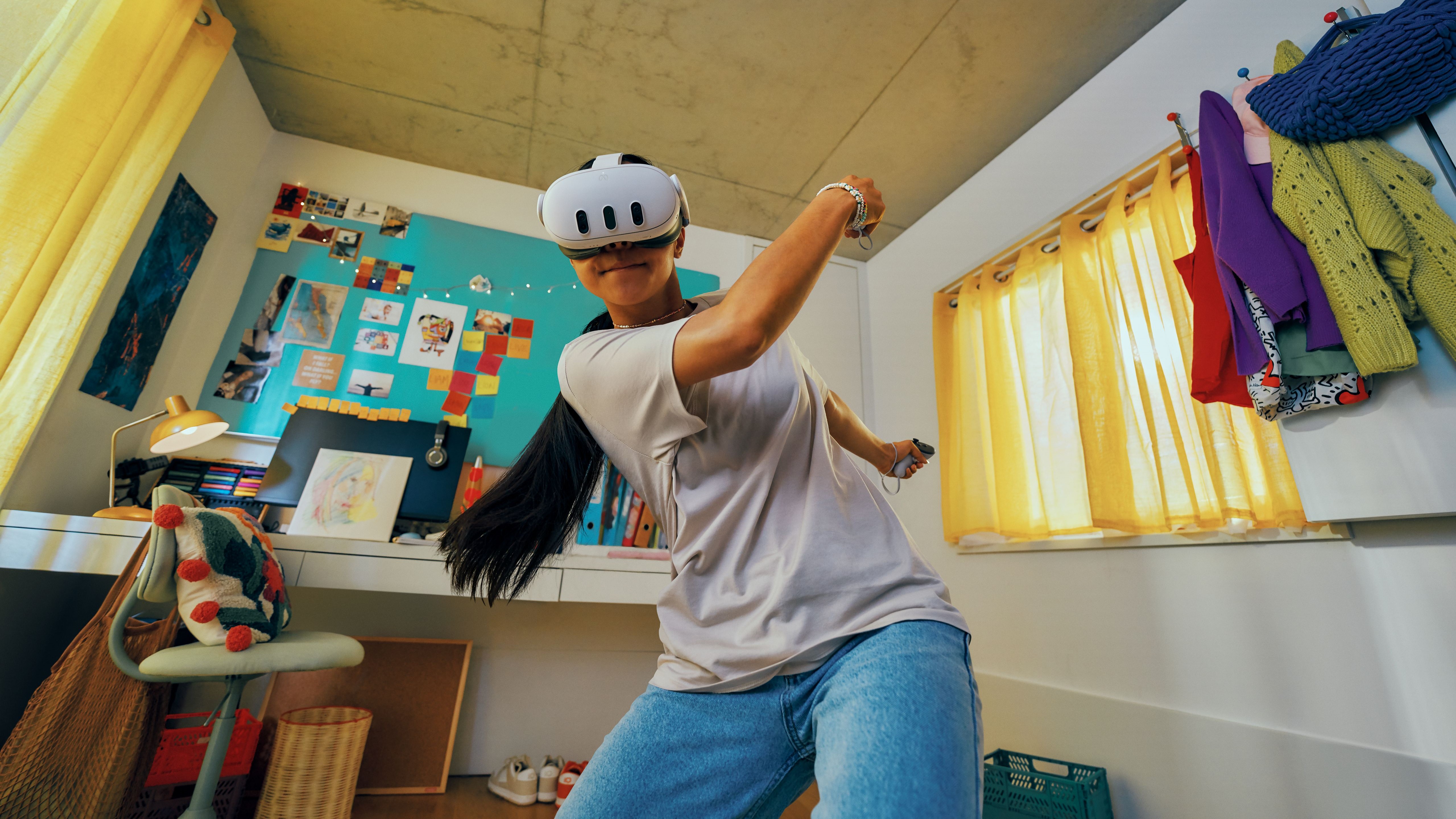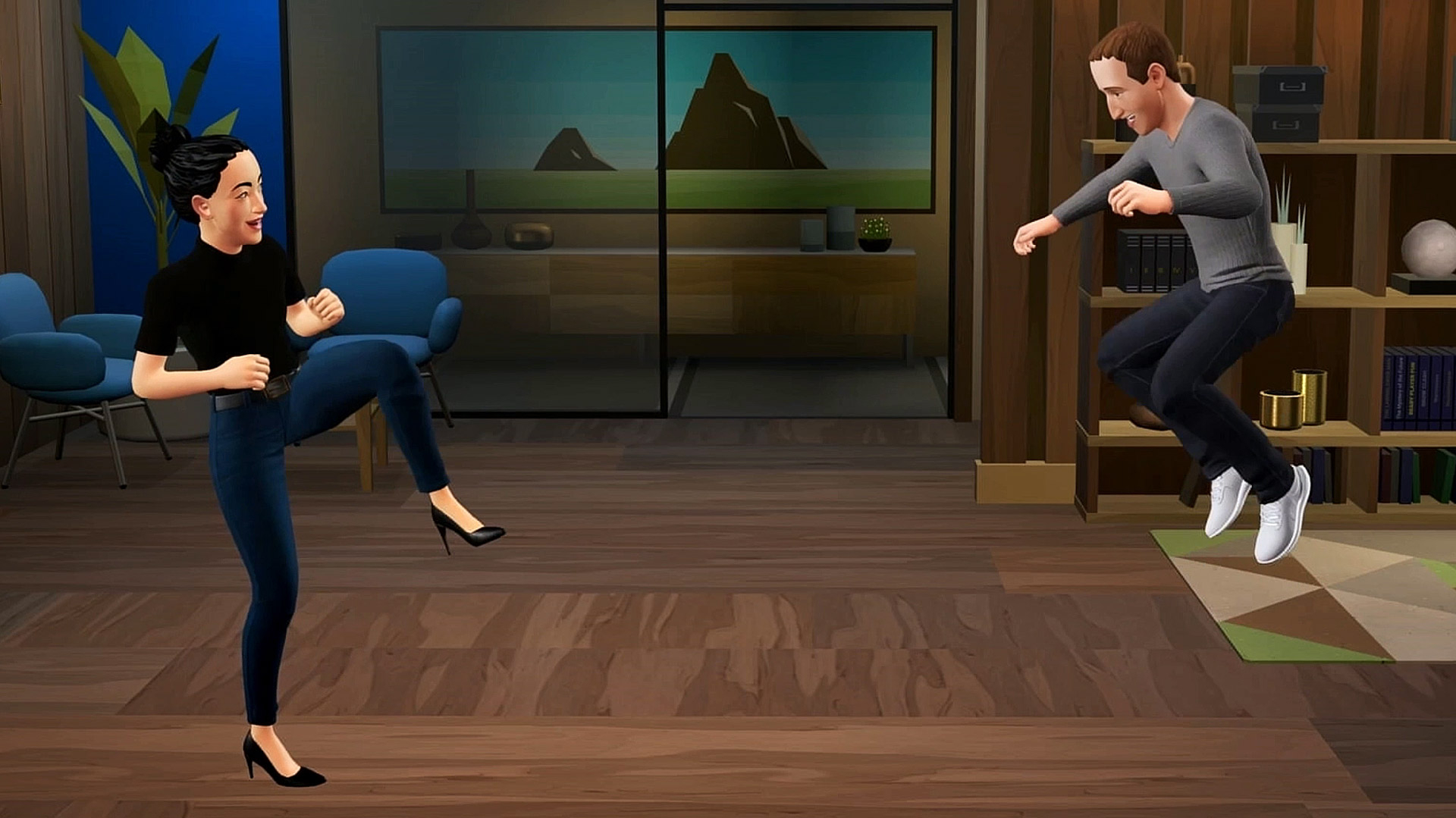The Meta Quest 3 will get a much-needed body-tracking update soon

If you’ve ever found yourself pulled out of a VR experience because your virtual arms and upper body don’t match up well with your real body, Meta has some good news: the Meta Quest 3 (which you can find out more about in our full Meta Quest 3 review) will soon have proper body tracking thanks to an incoming update.
Currently, a lot of guesswork goes into VR avatars. Unless you’re wearing some kind of tracking suit, the headset has to guess where your arms and body should be based on your head and hand movements, as well as any height data you provide. Sometimes it's okay, but generally, this system is a little off, and rather than helping with immersion it can serve as a constant reminder that the virtual world is just that.
The Meta Quest 3 has an answer – or at least it will come December, when Meta rolls out an update (via UploadVR). The new VR headset’s downward-facing side cameras are able to see and track your torso, shoulders, elbows, and wrists, and using these data points, and some new algorithms, VR experiences can create avatars that more closely mimic your actual movements through a system called inside-out upper-body tracking.
In a demo video Meta, has shown how this system can not only more accurately copy your movements, but translate body movements that Quest hardware couldn’t follow well before – such as elbow strikes, and bending forward or to the side (movements which could be great for guided workouts in VR, for example).
Unfortunately, not every app will support inside-out upper-body tracking right away. A few, like Supernatural and Drunken Bar Fight, will, but you’ll have to wait for developers of other VR experiences to implement the SDK update into their software before you can enjoy the improved avatars.
Legs at last
This SDK update will also bring some improvements to VR legs.
VR legs have been a sore spot for Meta. It received some ridicule during Meta Connect 2022 when one of its biggest announcements was that Meta’s avatars would soon get legs – ridicule that was amplified when it was discovered that the demo it showed off was staged using motion-captured animation.
Sign up for breaking news, reviews, opinion, top tech deals, and more.
Virtual legs did actually start rolling out in September, but only for VR beta testers, and only in the Quest home app. It appears that this upcoming Meta Quest 3 update will bring the appendages to more users and a wider variety of apps – that is, if developers enable it.

It’s worth noting, however, that your VR legs will be AI-generated rather than actually being tracked. Based on demo videos, the AI seems to get the leg movements mostly correct – it knows when you’re squatting, jumping, or doing a movement like a boxer bounce – but it won’t know when, say, you lift up a knee. So copying the jump-knee tuck movement Zuckerberg showed off during the Meta Connect 2022 demo won’t be possible in VR yet.
With the advancements Meta is making in tracking and AI it’s possible its legs will evolve in the coming year but for now, we’ll have to make do with what we have.
Want to know more about the new VR headset? Check out our hands-on Meta Quest 3 review.
You might also like:

Hamish is a Senior Staff Writer for TechRadar and you’ll see his name appearing on articles across nearly every topic on the site from smart home deals to speaker reviews to graphics card news and everything in between. He uses his broad range of knowledge to help explain the latest gadgets and if they’re a must-buy or a fad fueled by hype. Though his specialty is writing about everything going on in the world of virtual reality and augmented reality.